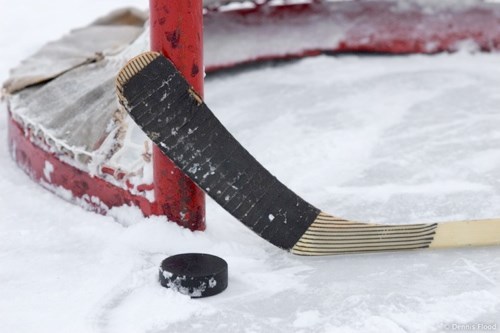Pass, shoot, score, defend and hit. Those are the basic skills any young hockey player looks to develop, but hitting might not be on the list for much longer.
A decision is expected to come down Sunday from Hockey Canada's annual meeting about putting a possible nation-wide ban on body checking in peewee level hockey.
The division of 11-and 12-year-olds have already had body checking banned in Alberta, Quebec and Nova Scotia.
Jason Teniuk, director of peewee for the Battlefords Minor Hockey Association, has his fingers crossed the ban doesn't take effect. He thinks the greater size difference in bantam, the next division up, makes it more dangerous as the starting point for body checking.
"I think we're taking a number of steps backwards by doing this. To me, it's shocking and disappointing all at the same time," Teniuk said.
He wants to see the education process improve to enhance safety, to teach kids hitting isn't about hurting the opponent, it's about getting the puck.
"We can't necessarily eliminate all those aspects of the contact and the risks that come with that, but we can certainly try to manage it and give them the best skills that they have to move forward," he said.
A study by the Journal of the American Medical Association in 2010 studied peewee hockey in Alberta (a province with checking at the time of the report) and compared the injury results to Quebec (a province without checking).
From the Alberta teams, there were 241 injuries, with 78 being concussions. Whereas in Quebec, there were 91 injuries, and only 23 concussions.
These numbers were reflected by the Brain Injury Association of Canada. A study released in 2010 shows peewee-aged hockey players are two-and-a-half times more likely to suffer an injury, and three-and-a-half times more likely to suffer a concussion while playing in a league that allows body checking.
Further, the study said 62 per cent of injuries suffered by players under 18 are a result of a body check. A report by the British Journal of Sports Medicine studied boys hockey in Burlington, Ont. aged 4-18 found the opposite. It said 66 per cent of injuries were a result of unintentional contact.
Teniuk won't have a say in the possible rule change, but he can do his part to adjust and make sure the players in his league are safe. The way to start is by teaching players how to properly give a hit, take a hit, and not look to hurt people.
"Depending what happens with this vote, we maybe need to step up and say we've done a lot with skating development, with puck handling, with skills development, but we haven't done anything with body checking," Teniuk said.
He hasn't seen a problem with injuries in peewee. Last year, as far as serious injuries go, there was a broken arm, then one boy who broke his shoulder, came back, and broke his arm. Teniuk said there were no neck injuries, serious head injuries or cases of a player going out on a stretcher.
"If we get into the bantams with this I just can't imagine what's going to happen with that. I don't think we're going to eliminate injury, I think we're going to enhance the injury process here," he said.

